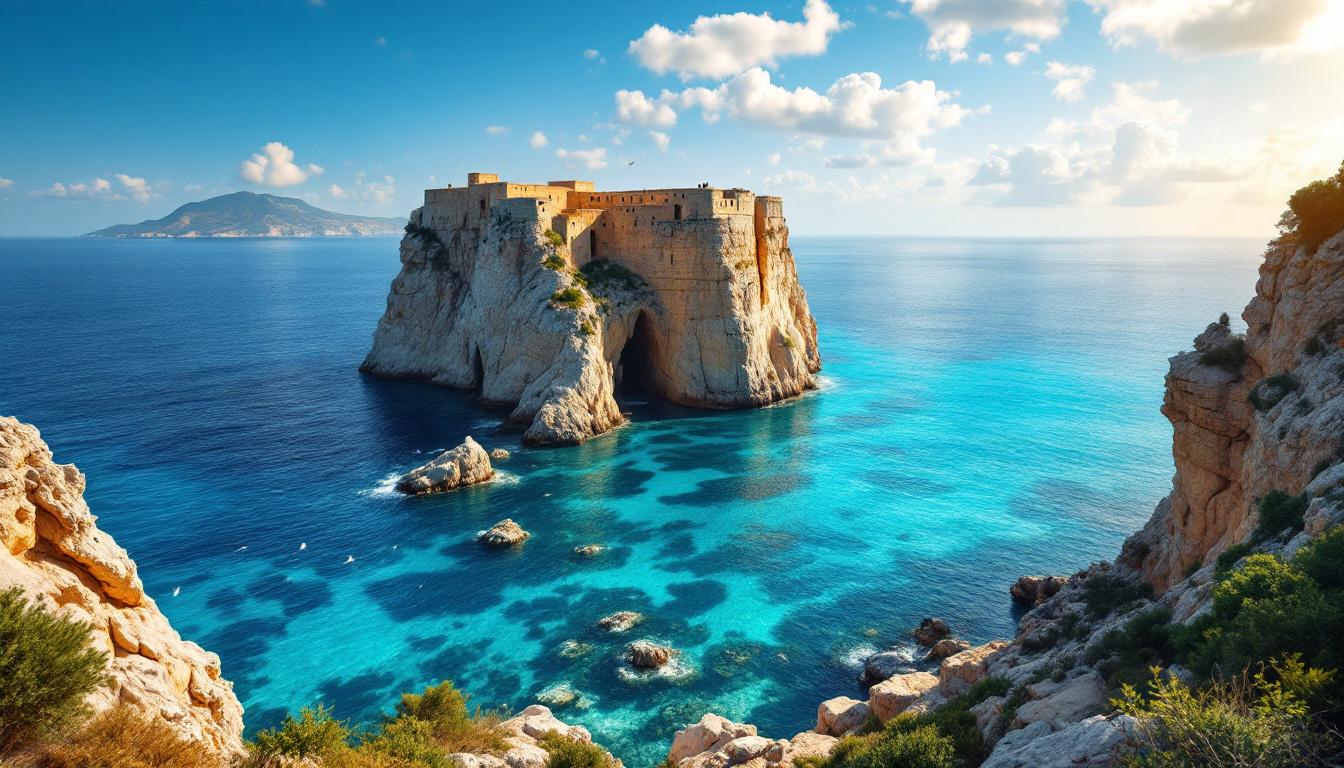Five kilometers off Malta’s southern coast rises the Mediterranean’s most forbidden island, where decades of military bombardment created an accidental paradise that no tourist will ever touch. Filfla stands as the only Mediterranean island where unexplored ordnance still guards ancient sacred secrets, making it more exclusive than any private resort or restricted royal estate.
This 3.7-hectare limestone fortress defies every Mediterranean travel experience you know. While Santorini drowns in cruise ship crowds and Capri charges €50 boat fees, Filfla maintains absolute solitude through military prohibition that has preserved something genuinely miraculous.
Locals whisper about this tiny island with reverence, calling it their “forbidden paradise” – a place where European Storm Petrels nest in bomb craters and endemic wall lizards found nowhere else on Earth scurry across unexploded shells from World War II naval bombardment.
The military protection that created Mediterranean magic
Royal Navy bombardment legacy preserves perfection
From the 1890s until 1971, the Royal Navy used Filfla as target practice, pounding its limestone cliffs with shells, bombs, and rockets that left hundreds of unexploded ordnance scattered across the island. This intensive military history created the only Mediterranean nature reserve protected by active danger zones, ensuring zero human interference for over 50 years.
One nautical mile exclusion zone enforces solitude
Malta maintains strict fishing prohibitions within one nautical mile of Filfla, as nets could snare unexploded shells still embedded in shallow waters. Unlike any other former military site in the Mediterranean, this ordnance contamination combined with critical ecological status results in absolute landing prohibition that surpasses most military installations.
Ancient sacred connections hidden in plain sight
Neolithic temple alignments reveal spiritual significance
Archaeological speculation suggests Filfla served as a celestial marker for Malta’s 5,500-year-old UNESCO temples of Ħaġar Qim and Mnajdra. The island’s distinctive silhouette creates perfect astronomical alignments with these ancient sacred sites, potentially functioning as a navigation point for prehistoric religious practices that modern science is only beginning to understand.
Lost chapel connected maritime blessing traditions
Historical records confirm Filfla once housed a chapel dedicated to Our Lady of Mount Carmel, where Maltese fishermen sought blessings before dangerous sea voyages. This religious tradition connected the island to Malta’s maritime heritage until the 1856 earthquake caused massive cliff collapses, embedding Filfla permanently in local spiritual consciousness through legends of divine intervention.
Biodiversity sanctuary beyond scientific imagination
Endemic species density defies ecological logic
Filfla hosts more endemic species per square meter than nature reserves a hundred times its size, including the world’s largest European Storm Petrel colony and the endemic Filfla wall lizard found nowhere else on Earth. Protected under multiple conservation frameworks since 1980, this tiny island demonstrates how military exclusion accidentally created perfect ecological conditions.
Military scarring provides ideal nesting habitat
The bombardment damage ironically created optimal seabird breeding conditions, with scarred limestone providing perfect crevices and platforms while access restrictions eliminated all human disturbance. August nesting season offers premium viewing opportunities as parent birds actively feed young during this period, creating dramatic flight displays visible from legal mainland observation points.
Exclusive viewing access from Malta’s sacred coast
Dingli Cliffs provide panoramic forbidden island views
Malta’s highest cliffs offer the best legal vantage point for observing this Mediterranean mystery, with clear day visibility, established parking, and walking paths optimized for photography. The elevated position provides dramatic perspective of 60-meter limestone walls rising from crystalline waters that remain untouched by any human activity.
Sacred temple viewing combines ancient connections
Viewing Filfla from the Ħaġar Qim temple complex allows visitors to contemplate potential prehistoric spiritual connections while experiencing both UNESCO sites simultaneously. Morning hours provide optimal atmospheric clarity, with August 2025’s stable high-pressure systems creating exceptional visibility compared to hazy summer conditions affecting other Mediterranean destinations.
Malta’s hidden coastal fortifications reveal similar preservation stories where military history accidentally protected cultural treasures from mass tourism destruction. Modern Maltese take genuine pride in Filfla’s inaccessibility, understanding that some places gain power precisely because they remain beyond human reach.
The Mediterranean holds no other island like Filfla, where military prohibition preserves ancient sacred mysteries in ways that no tourism board could engineer. Stand on Malta’s southern cliffs at sunrise, gaze toward this forbidden paradise, and experience the profound satisfaction of witnessing something genuinely untouchable in our increasingly accessible world.
